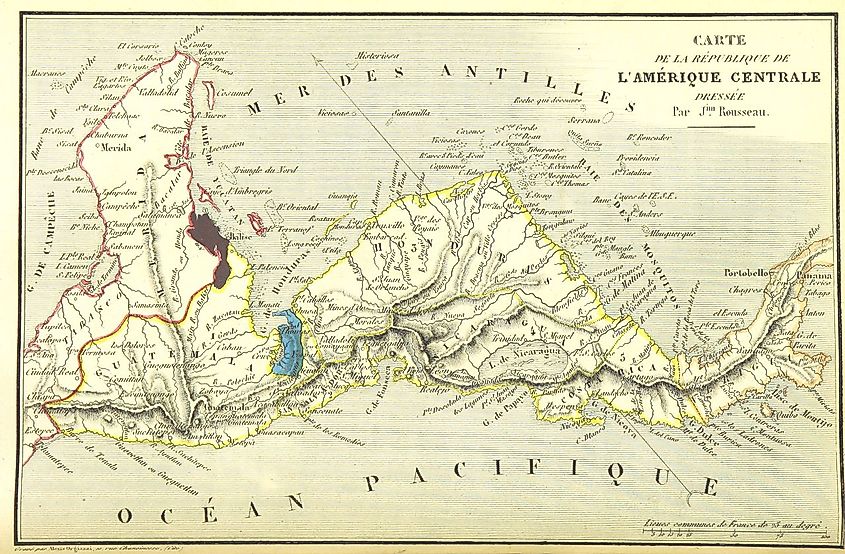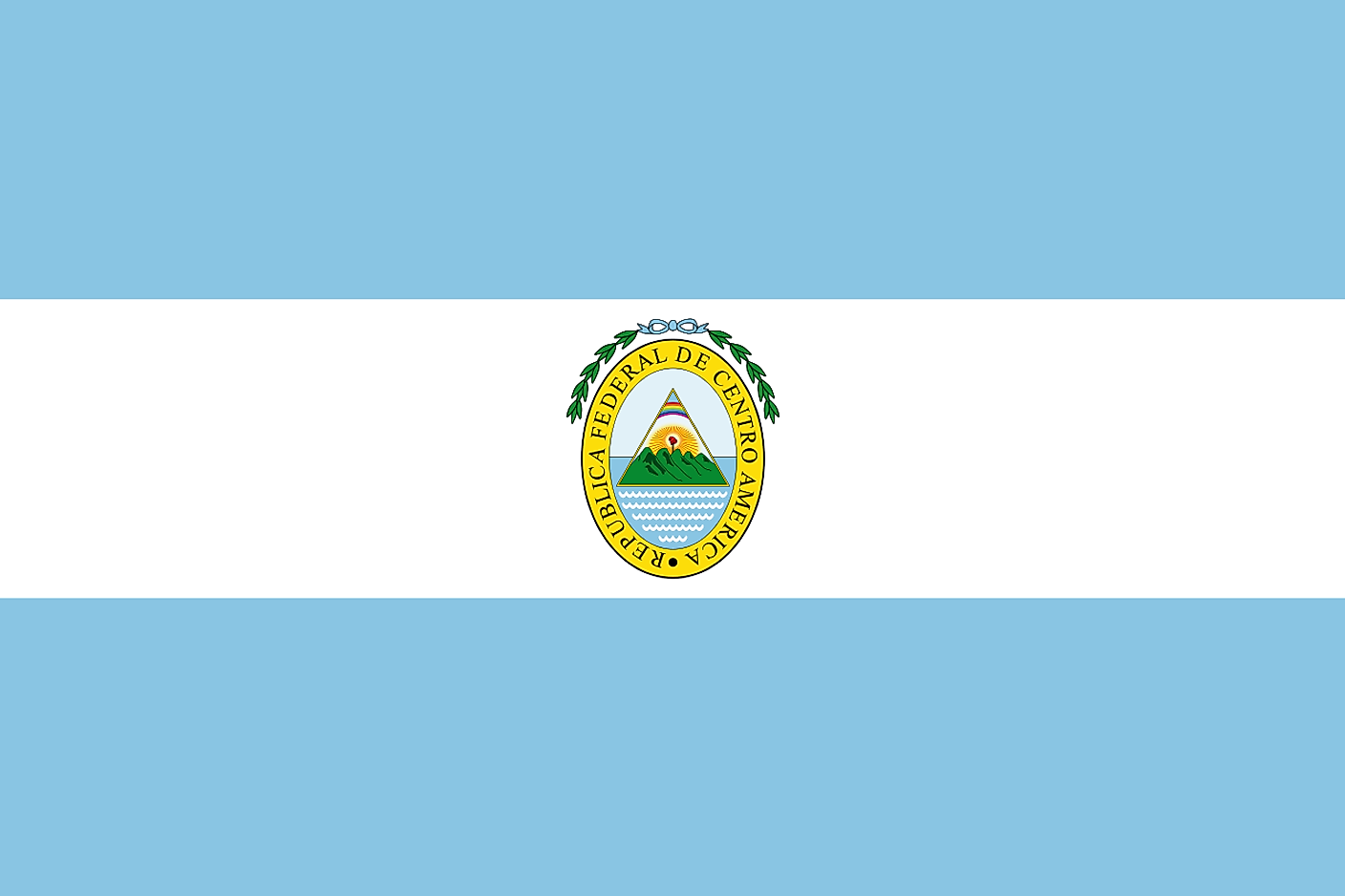
Federal Republic Of Central America
The Federal Republic of Central America, also known as the United Provinces of Central America, was a short-lived country in Central America that comprised the present-day countries of Costa Rica, Nicaragua, Guatemala, Honduras, and El Salvador. The territory also included Chiapas (Mexican southern) and Los Altos, a former state that occupied present-day west Guatemala. The state was established in 1823 after Central America gained its independence from Spain’s New World Empire and was led by Francisco Morazan, a Honduran liberal. However, the constant fights between the conservatives and liberals due to ideological differences led to the federation’s dissolution in 1840. The republic disintegrated into the various countries forming part of Central America today.
History Of The Federation
The Colonial Era
Central America comprises seven sovereign states; Guatemala, Belize, Honduras, El Salvador, Nicaragua, Panama, and Costa Rica. These countries share similar history because of the Spanish influence in the region. The Spanish conquered most of Central America in the 16th century, except Belize and the West Caribbean Zone, mainly occupied by the British. From the 16th century to 1821, the Central American region (except present-day Panama) was known as the Kingdom of Guatemala or the Captaincy General of Guatemala within New Spain (Spanish Empire).
The Captaincy was supervised by the Spanish viceroy based in Mexico City, although the viceroy nor his deputies administered the kingdom. It was administered by a Captain General appointed who was stationed first in Antigua, then Guatemala City. However, the region remained just a remote outpost, with the colonial authorities largely ignoring it. Central America had no mineral wealth like Mexico and Peru, and the natives were fierce and difficult to control or enslave. Central America had a population of about one million, with most people living in Guatemala.
Independence
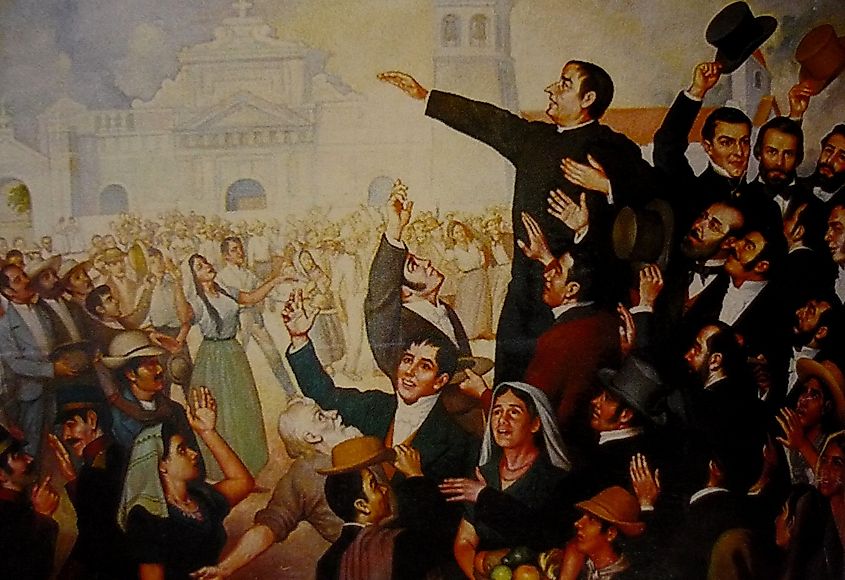
Between 1810 and 1825, several parts of the Americas declared independence from the Spanish Empire. The independence movement broke out around 1811 in El Salvador as a reaction to the Peninsular War. However, the Spanish easily suppressed the revolts. In 1821, a congress comprising Central American Criollos developed the Act of Independence of Central America to liberate the region from Spanish rule. The document was to become effective on September 15, 1821, a day celebrated as Independence Day by most Central American Countries. Since Spain was struggling at home, it decided to focus on Mexico and Peru and decided to make deals with Central American revolutionaries.
Mexico Empire
Central America’s independence was short-lived because the rival groups refused to be part of the federation in Guatemala. On January 25, 1822, Guatemala’s conservatives welcomed the idea of annexation by the First Mexican Empire. However, the liberals objected to this idea, and General Vincente Filisola, sent by Emperor Agustin as Guatemala’s new ruler. The union between the Mexican Empire and Central America led to several conflicts and battles, making political unity difficult. Costa Rica decided against joining the Mexican Empire as part of its resolution at the end of the Ochomogo War. After Agustin’s empire dissolved in 1823 and Mexico became a republic, the Congress of Central America Constituent Assembly declared independence from the Spanish Empire on July 1, 1823.
Establishment Of The Federal Republic
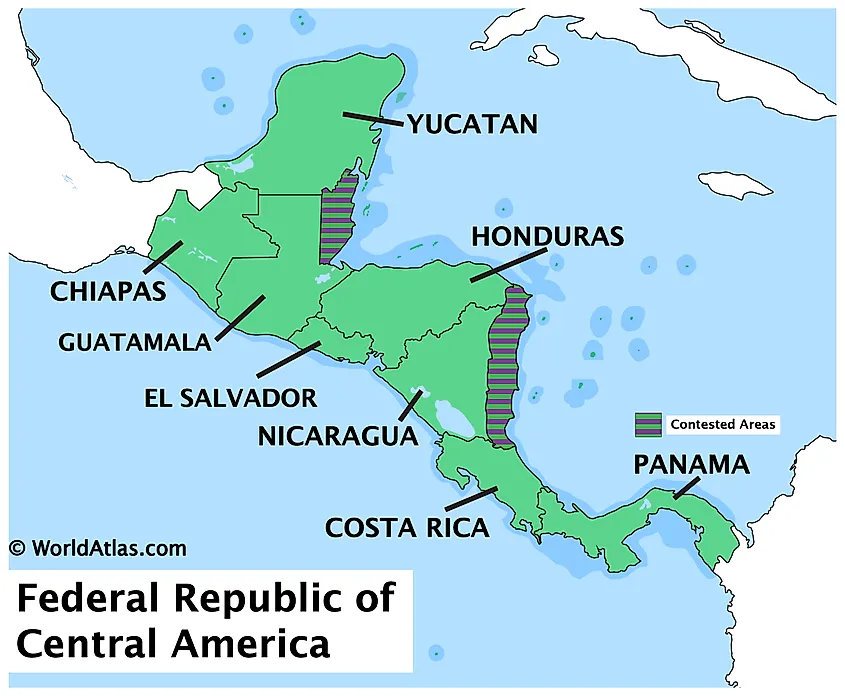
After Congress of Central America, comprising representatives from the five provinces, declared the region’s independence from the Spanish and other foreign powers, it established a federal republic. The new establishment was provisionally called “The United Provinces of Central America.” However, the 1824 Constitution established the new state as “The Federal Republic of Central America.” The nation’s founders included mainly creoles who considered Central America a vital trade route between major world oceans and a region with a great future. The nation comprised present-day Honduras, Guatemala, Nicaragua, El Salvador, Nicaragua, and Chiapas (Mexico’s southern state). Los Altos joined the nation as the sixth state in the 1830s and later became part of western Guatemala. Two areas were, however, contested (as observed on the map above) - British Honduras and Mosquito Coast. These were British colonies that failed to become part of the union and later became parts of present-day Belize and Nicaragua, and Honduras.
The federation was governed by a federal president, based in Guatemala, assisted by local governors from the five local states. Liberals had high hopes in the federation and believed Central America would become a democratic nation. During the federation’s existence, the Catholic Church played a central role in the position of power, while the European creoles obtained the voting right. The slaves were emancipated and slavery was outlawed in the region. However, thousands of Indians continued to live in captivity.
The National Emblems
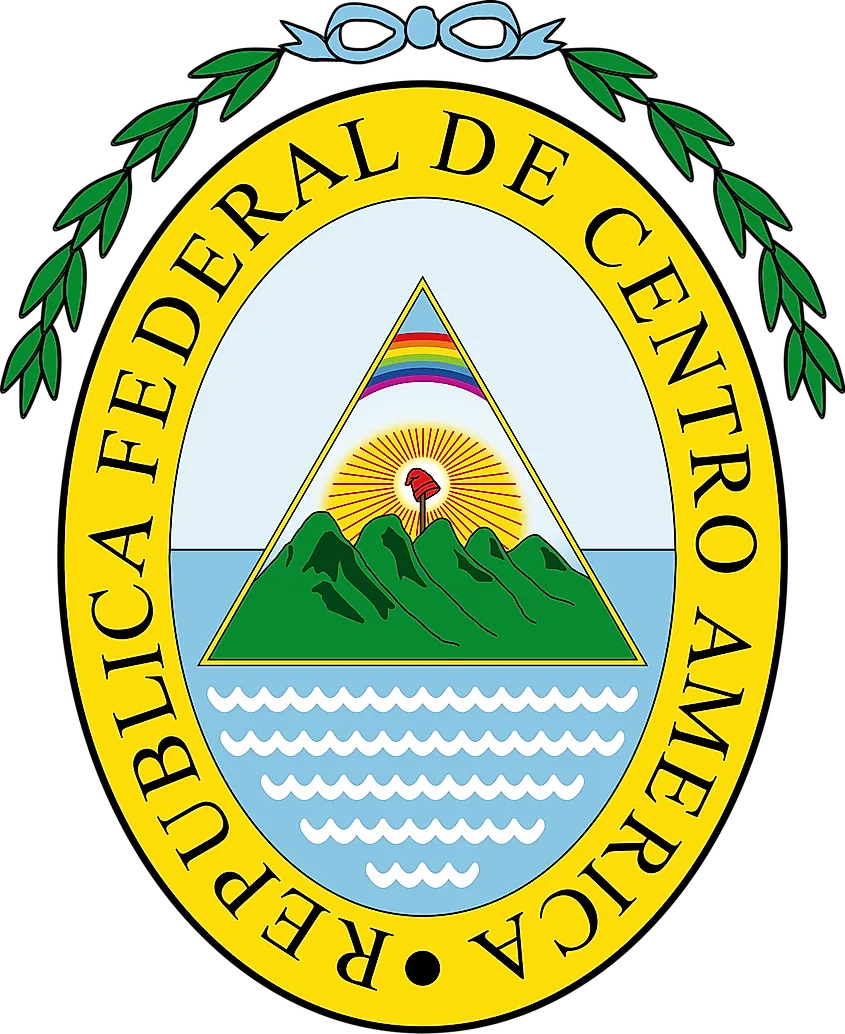
The people’s aspirations for the new federation were reflected by the nation’s national emblems, especially the flag and coat of arms. The flag featured the two prominent colors of the flags of most present-day Central American countries; blue and white. The flag comprised a white horizontal band between two blue bands, with the two blue bands representing the two oceans (understood to be the Atlantic and Pacific Oceans). Centered on the white band is a coat of arms featuring five mountains with a Phrygian cap. The coat of arms also bears the nation’s name “Republica Federal de Centro America” (Federal Republic of Central America).
Conflict And Dissolution

From the onset, bitter conflicts between the liberals and conservatives plagued the federation. The conservatives wanted the Catholic Church to be at the center of power, limited voting rights, and a powerful executive. However, the liberals wanted the state and the church to be separate entities and a weaker executive. At first, the liberals controlled the Assembly, with Manuel Jose Arce elected president in 1825. However, Arce later turned against the liberals and dissolved the Assembly, leading to his abdication in 1829. Francisco Morazan, a Honduran, replaced Arce as the president in 1830 and relocated the federation’s capital to San Salvador from Guatemala City the following year. The liberals, under Morazan’s leadership, quickly implemented their agenda, including removing the Catholic Church from government positions and cutting off any aid to the church. The wealthy conservatives always scandalized to discourage their dissents.
The conservatives did not relent in their opposition to the Morazan-led liberals. The conflict between the two parties, alongside poverty and cholera outbreaks, resulted in civil wars throughout the federation. Morazan was forced to relocate the capital to Guatemala City in 1834 to please the conservatives. The clergy insisted that the 1837 cholera outbreak was liberals’ punishment from God. Lack of central authority encouraged distrust and disputes among the different provinces, further weakening the federation.
The civil war between 1838 and 1840 finally led to the union’s disintegration, with Nicaragua as the first country to cede from the federation in November 1838. Costa Rica and Honduras also separated shortly after Nicaragua, while Rafael Carrera seized and controlled Guatemala. Thus, Morazan was only left Costa Rica and El Salvador. However, he fled to Colombia in 1840, leading to the final collapse of the federation. By this time, four states had declared their independence. However, tension continued to grow among the nations throughout the 19th century. Through the years, several attempts have been made to reunite these countries, but none has succeeded.
